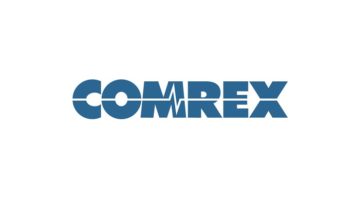 Bryan Waters is chief engineer at Cumulus Media Atlanta. After 25 years in broadcast radio, including 13 years in engineering, he says, “I learn something new every day.”
Bryan Waters is chief engineer at Cumulus Media Atlanta. After 25 years in broadcast radio, including 13 years in engineering, he says, “I learn something new every day.”
This article appeared in Radio World’s “Trends in Codecs and STLs for 2020” ebook
Radio World: How are design and performance of codecs for radio changing?
Bryan Waters: One of the more important trends I am seeing lately with codecs would really be on the STL side. You see more MPX codecs hitting the market, giving more flexibility to broadcasters who want their gear at the studios where it is accessible, but still want the sound of the composite output at the transmitter.
With most units giving built-in failover and/or multiple network interfaces, one piece of gear at a site can get you everything you need.
RW: How are these technologies being deployed to address problems in new ways?
Waters: Codecs have opened up the world for those “hard-to-reach sites,” the situations where you’d never get a STL shot but you’ve got internet.
With Atlanta’s ever-growing metro, a traditional 950 MHz link is not always possible. We deal with it by running GatesAir IPLink MPXp units as our primary STL system, using a mix of composite and AES running over fiber between five sites. With the web GUI, we are able to monitor everything from studio to transmitter site.
RW: What about broadcasting from home?
Waters: Codecs have kept the industry alive during our days of COVID-19 quarantine. From the standard Comrex and Tieline “remote gear” to online sites like CleanFeed.net, we’ve had to find ways to bring co-hosts together virtually, enabling them to still interact with the audience, without it sounding like a train wreck. Though occasionally …
[Check Out More of Radio World’s Ebooks Here]
RW: How powerful can codecs get?
Waters: I think the only limitation is our imagination. Where there is a need, there will always be a person building something bigger, better and stronger.
RW: What functions and features are being offered on new models that engineers who haven’t bought a codec or STL in a while should know about?
Waters: I don’t know if there is a function or feature that would stand out to me, as much as the stability of IP codec units now.
Eight to 10 years ago, an IP codec seemed like a good alternative for remote broadcasts; but the stability, along with a basic lack of network infrastructure, made it a less-than-optimal choice for STL. Today, whether the pipe is big or small, you have available options to get your audio delivered and sounding good.










